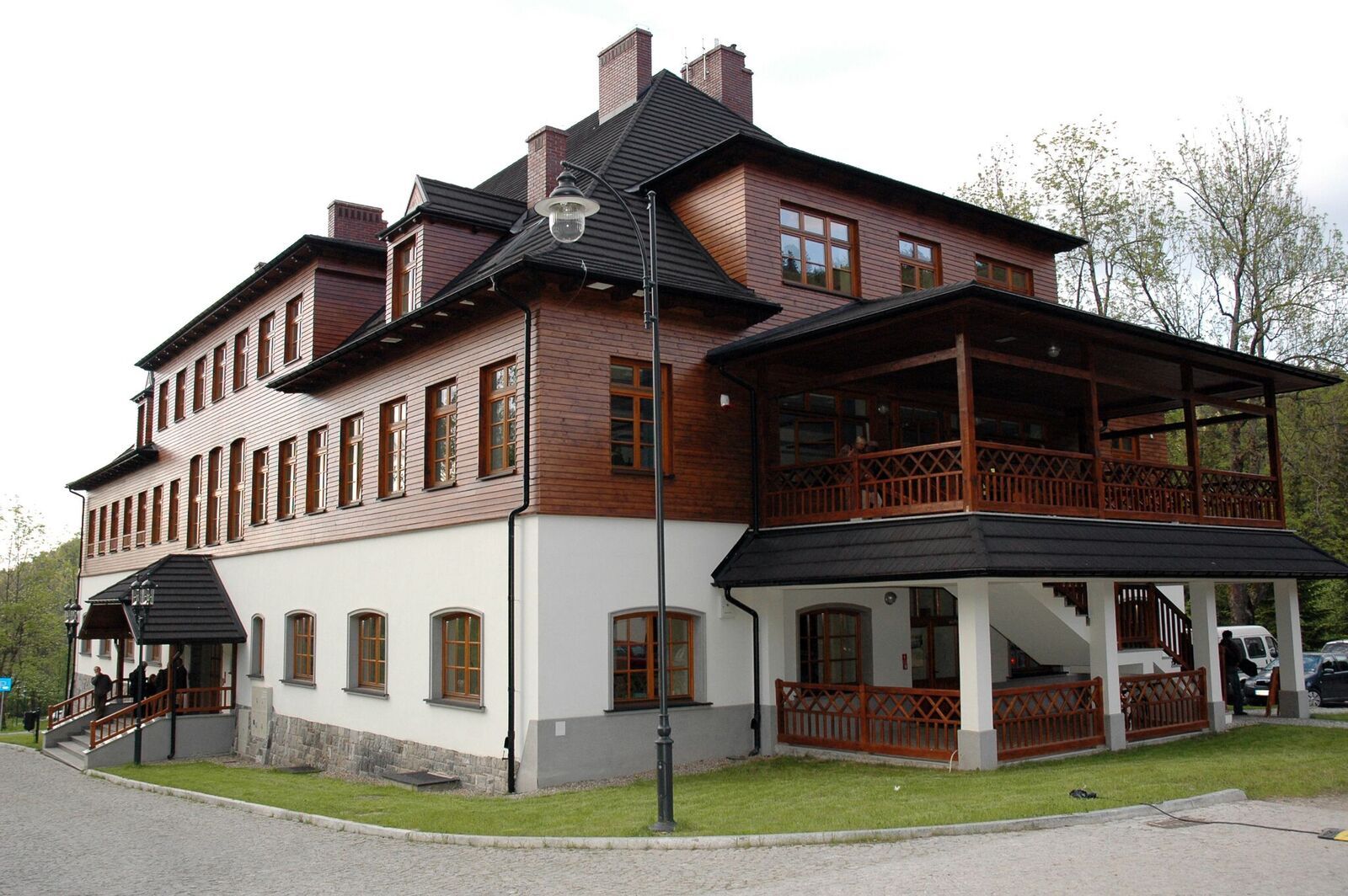The
road to the hear of the Tatra National Park runs through Kuźnice,
which many tourists visiting Zakopane and TPN remember as the place
where the lower station of the cable car to Kasprowy Wierch is
located. Kuźnice is part of Zakopane located in the northern part of
the Bystra Valley in the Western Tatras, where the trails to
Kalatówki, Kondratowa and Giewont, Kasprowy Wierch, and the
Gąsienicowa Basin begin.
Kuźnice
can boast a rich history, as it was mentioned as early as the 17th
century. A metalworking centre was established here, most likely at
the turn of the 17th and 18th centuries, as evidenced by references
to Hamerski Foundry (ironworks) from the reign of Augustus II Sasa.
Growing foundries brought profits and in the second half of the 18th
century.Along with the Nowy Targ starosty, it was bought by the
Karkow Podstoli Franciszek Rychter Pelikańczyk, and then in 1773 the
management of the Hamerski Foundry was assumed by the Austrian
occupiers, who decided to expand industry in the Tatras. However, due
to the depletion of iron ore deposits, in 1791 the production of pig
iron was discontinued. Kuźnice passed into private hands and changed
owners until it was bought by Hungarian Jan Wincenty Homolacs, who
initiated the development of Kuźnica as an industrial centre.
Thanks
to the discovery of new iron ore deposits, Jan’s son Emanuel
extended the foundries; however, he was limited by a lack of fuel for
the furnaces. In 1824, the Austrians decided to sell the Nowy Targ
district, which was divided into four parts. Emanuel Homolacs bought
two parts - Zakopane and Białczany. In 1833, the Homolacs
(Edward, Emanuel’s nephew, and his wife Klementyna) settled in a
manor house built in Kuźnice. The prosperous foundries become one of
the largest industrial centres in this part of Europe at that time.
Thanks to this, the Homolacs could also apply themselves in other
fields, and so the manor in Kuźnice began to play a role in culture.
The prominent personalities who came to the Tatra Mountains stopped
in Kuźnice. In the mid-19th century, a garden was built in front of
the manor house, in which a fountain was built, elements of which
have been preserved to this day. At the beginning of the second half
of the 19th century in Kuźnice, Edward Homolacs began to assemble a
natural collection with the help of Antoni Kocyan, a forester at
Homolacs estate, who complemented the collections (the collection can
be viewed in Kuźnice in the restored coach house).
The
sale of the estate in 1870 marked the beginning of Kuźnice’s
downfall as an industrial centre. Auctioned goods fell into the hands
of Count Władysław Zamoyski. At the end of the 19th century, the
Women’s Home Industry School, run by Kurzycki's mother, Jadwiga
Zamoyska (nee Działyńska), was transferred to Kuźnice. In
connection with the school's aspirations for self-sufficiency,
flower, fruit, and vegetable gardens were established in Kuźnice.
Count Zamoyski transferred the estate for social purposes by
establishing the Kórnik Works Foundation, which due to poor
management fell into financial trouble and, as a result, was
partially sold. The school was converted into a Junior High School
and an Economics High School, which was closed in 1948.
In
the years 1951-2003, the former manor area functioned as a hospital
complex, administered by the Specialist Rehabilitation and
Orthopaedic Centre for Children and Youth, which in 1997 was
transformed into the Children’s and Youth Orthopaedics and
Rehabilitation Clinic in Zakopane, part of Jagiellonian University’s
college of medicine. The facilities, then in poor condition, were
transferred in 2003 to the Tatra National Park under the Nature
Conservation Act.
Thanks
to EU funds from the Integrated Regional Development Operational
Program, the manor and park complex located in Kuźnice was
revitalised. As part of the work, the 19th century granary was
adapted as a temporary exhibition room, and the coach house was
adapted to house the Kuźnice history museum; rebuilding the
foundations of the Homolacs manor; renovation of the nineteenth
century manor houses and restoration of gardens and parks. Work was
carried out in 2006-2008. The restored park includes roads and paths
with lighting, and a fountain from the Homolacs time.
 Dobra
Dobra





